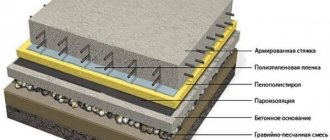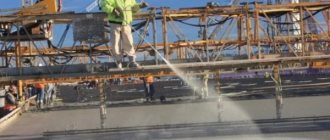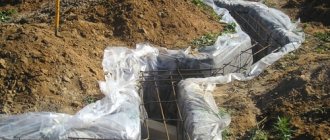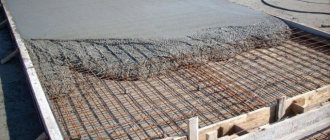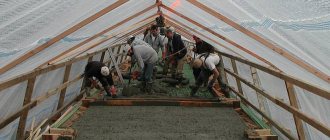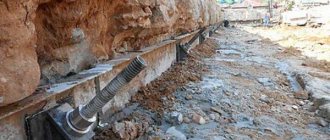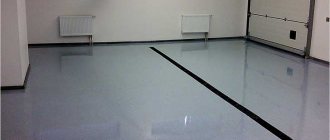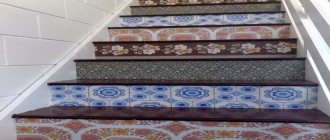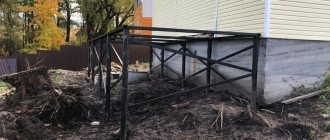Concrete is a unique invention of mankind; thanks to it, the construction of high-rise buildings of complex design has become possible. The characteristics of the building material are difficult to overestimate; the need for it is very high. It is used in the construction of complex architectural structures in the form of bridges, roads, buildings, and is also used in the conservation of oil wells. But, despite its positive properties, the material is susceptible to natural and man-made influences that adversely affect its structure. To protect structures from further destruction, the surface is often treated with silicate glue.
What is liquid glass?
The impregnating preparation, according to GOST 13078-81, is made from quartz sand or with the addition of sodium [1]. The substance is an adhesive, viscous composition obtained by firing quartz sand or by the autoclave method. They first started talking about the drug 200 years ago; it was invented in 1818, since then the manufacturing method and composition have not changed. Liquid glass is used in construction for processing internal and external concrete surfaces of industrial and private buildings.
What is liquid glass used for?
By its nature, cement has a porous structure through which moisture enters and destroys the structure. To protect products from environmental influences, builders often use various additives, among which silicate glue is the most widely used. It is made in the form of a water-based solution, the main components are potassium and sodium silicates. After drying, a polymer film is formed that prevents moisture from penetrating deep into the pores of cement mixtures.
Liquid glass improves the quality of concrete, increases the strength of structures, and has high waterproofing properties. The adhesive composition based on silicates has the following characteristics:
- waterproofing is the main parameter of impregnation;
- the drug accelerates the concrete hardening process several times;
- the polymer layer protects the building from static electricity;
- the alkaline solution protects the wall from the spread of fungus, mold and other cultures that adversely affect the structure.
There are two types of glass available for sale: potassium-based or sodium-based. Potassium glue is made from crushed quartz sand, which is fired during the process, and the powder is mixed with water. This composition is often used for waterproofing the foundations of buildings and swimming pools. Due to its antiseptic properties, the drug is used as an antiseptic to combat mold and chemically aggressive environments.
In addition to potassium glue, sodium impregnations are often used. They have less protective properties, in particular against salt deposits, but due to the low cost of the products they are more in demand on the market. The composition is produced both using autoclave technology and without it.
Causes of crack formation
If the technology for pouring concrete is violated or due to poor quality care for it until it reaches sufficient strength, various types of cracks can form:
- In the first 1.5-2 hours, while the concrete retains its plasticity, shrinkage may occur. The cause of shrinkage is a rapid decrease in the volume of the surface layer as a result of dehydration occurring under the influence of wind, sun or low temperatures. Longitudinal cracks originate above the upper reinforcement; such a defect can be avoided by carefully preparing the mixture and repeated vibration, which is carried out before the solution sets.
- Premature plastic shrinkage occurs in the first 1-2 hours after pouring concrete. The reason for its manifestation is the drying of concrete and compression of the outer surface layer. Surface cracks do not have a specific direction. Premature plastic shrinkage can be prevented by reducing the drying rate of the concrete; you can resort to repeated vibration before the mixture sets.
- The release of heat of hydration is observed in the first days after concreting due to the heating of the concrete core while the shell is cooling due to contact with the atmosphere and soil. Due to temperature differences, compressive stresses are formed, which lead to the appearance of surface or through cracks. It is possible to prevent the appearance of cracks due to the release of heat of hydration by installing expansion joints.
- Drying shrinkage may occur several weeks after concrete is poured in the form of surface and through-hole cracks. Such shrinkage can be avoided by proper selection of the mixture, strong reinforcement and construction of expansion joints.
- Temperature deformations can occur at any time during the operation of concrete due to sudden temperature changes. Deformation manifests itself in the form of bending cracks or surface cracks. Temperature deformations can be avoided by reinforcement, construction of expansion joints, and prestressing of reinforcement.
- Mechanical deformations can occur at any time and manifest themselves in the form of through cracks and bending cracks. This disadvantage can be avoided by reinforcing, prestressing reinforcement, and installing expansion joints.
- Its own stress state can cause the appearance of various cracks at any time during operation. Such negative impacts can be avoided with proper reinforcement.
- Bending cracks, as well as external microcracks as a result of external loading, can occur at any time during operation. Correct reinforcement can prevent concrete from deforming due to external load.
- Cracks along the reinforcement or in the area of water-filled voids due to frost can occur when exposed to extremely low temperatures. The effect of frost can be neutralized by high-quality vibration compaction of the mixture.
- Cracks in the corners of building elements and along the reinforcement may appear several years after concreting due to corrosion of the reinforcement. Such defects can be avoided by observing technological standards for constructing a protective layer, as well as by eliminating contact of the reinforcement with the ground.
Where and how is silicate glue used?
The range of applications of impregnating glue is quite wide. Due to the universal properties of the material, it is used to protect the foundations of houses, floors, walls, swimming pools, rooms with high humidity, technical structures, etc. After treatment, the surface is covered with a protective film that does not allow moisture to pass through. Concrete becomes stronger and its performance characteristics increase.
In addition to waterproofing properties, glass also has additional characteristics, such as heat resistance. It is used to impregnate wooden structures, walls of fireplaces and stoves to prevent fire. Due to its antibacterial properties, glue is used to protect buildings from the spread of mold.
To process stone products, the composition is diluted with water in proportions of 1:5 until a homogeneous mass is obtained. The composition is applied with a paint brush, roller and spray gun.
Using a brush allows the composition to penetrate deeper into the surface, but at the same time the consumption of the composition increases several times. The coverage area depends on the porosity of the material: when processing the walls of a foundation, well or pool, a thicker consistency is required. This is due to the fact that the composition loses its properties when diluted with water.
Method of using liquid glass
In addition to surface treatment, silicate glue is used as an additive for cement mortar. Add glue directly to the dry mixture, or less often to the finished solution. If the rules are not followed, cracks may form and the integrity of the product may be compromised, which will reduce resistance to moisture.
The percentage of glue in concrete during the manufacture of the foundation should not exceed 3% of the total mass of the solution. In other mixtures, the amount of additive can vary between 15-25%, but no more. Many craftsmen claim that a solution with the addition of silicate impregnation acquires additional strength.
What you need to know about liquid glass
Any additives affect the quality characteristics of the cement mortar, change its structure, and accelerate the hardening process several times. Even a small amount of the drug significantly reduces the setting time of the mixture.
Experts recommend mixing the solution in small portions.
Factors that influence strength
Before analyzing common defects in concrete structures, it is necessary to understand what may be causing them.
The key factor here will be the strength of the hardened concrete solution, which is determined by the following parameters:
The closer the composition of the solution is to the optimal one, the fewer problems there will be in operating the structure.
- Composition of concrete . The higher the grade of cement included in the solution, and the stronger the gravel that was used as filler, the more durable the coating or monolithic structure will be. Naturally, when using high-quality concrete, the price of the material increases, so in any case we need to look for a compromise between economy and reliability.
Note! Excessively strong compositions are very difficult to process: for example, to perform the simplest operations, expensive cutting of reinforced concrete with diamond wheels may be required. That's why you shouldn't overdo it with the selection of materials!
- Reinforcement quality . Along with high mechanical strength, concrete is characterized by low elasticity, therefore, when exposed to certain loads (bending, compression), it can crack. To avoid this, steel reinforcement is placed inside the structure. How stable the entire system will be depends on its configuration and diameter.
For sufficiently strong compositions, diamond drilling of holes in concrete must be used: a conventional drill “will not work”!
- Surface permeability . If the material is characterized by a large number of pores, then sooner or later moisture will penetrate into them, which is one of the most destructive factors. Temperature changes at which the liquid freezes, destroying the pores due to an increase in volume, have a particularly detrimental effect on the condition of the concrete coating.
In principle, it is the listed factors that are decisive for ensuring the strength of cement. However, even in an ideal situation, sooner or later the coating is damaged, and we have to restore it. What can happen in this case and how we need to act will be discussed below.
Preparing the base and applying impregnation [Recommendations from experts]
The drug is sold in plastic containers with a capacity of 0.8-55.0 liters, or in barrels of 200 liters. The composition itself is ready for use, all that is required is to mix it with a spatula or a construction mixer, and you can get to work.
Apply the drug evenly over the entire surface so as not to miss a single area, but there should be no puddles;
In cold weather, it is also prohibited to treat external walls or floors covered with frost. Treatment is carried out only on a dry and clean surface.
How to properly prepare a concrete base
Whether it is a basement floor or a wall, the surface must be cleaned not only of dirt and dust, but also of traces of paint, layers of iron and other debris.
To do this you will need a handy tool:
- putty knife;
- chisel;
- metal brushes, etc.
For large areas, professional equipment is used.
Treatment of roofs and floors with liquid glass
Apply the adhesive solution after preliminary preparation:
- Be sure to remove old coating, debris, pieces of concrete and other contaminants.
- Then the surface is treated with bitumen, following the technology, with a thickness of 2 mm.
- When the emulsion hardens, liquid glass up to 3 mm thick is poured over it.
- The layer is leveled with a spatula.
- After this, take a short break for up to 3 hours and apply the finishing layer.
Covering plinths and basements
To protect wet rooms and building basements, a mixture consisting of silicate glue, cement and water is used. To prepare the solution, you will need a container with a volume of 10-15 liters: a small construction basin is quite suitable. Cement is poured into it, water is added and glue is added, all this is mixed to the desired consistency.
The surface is treated with a wide brush or paint roller. Considering that the setting time of the composition is limited to 30 minutes, all tools must be prepared in advance. Before applying the solution, the surface is cleaned of dirt, crumbled plaster is removed, and paint is removed.
Wall and ceiling treatment
Impregnation work is carried out in two stages:
- First, apply the first liquid layer of adhesive solution with water. The composition is prepared in a ratio of 4:1.
- It is recommended to go through areas closer to the base 2-3 times. If necessary, you can use a spray gun by connecting it to an industrial vacuum cleaner. In this case, you will have to apply additional security measures. Although the solution does not emit toxic substances, it is advisable to protect your body with overalls.
